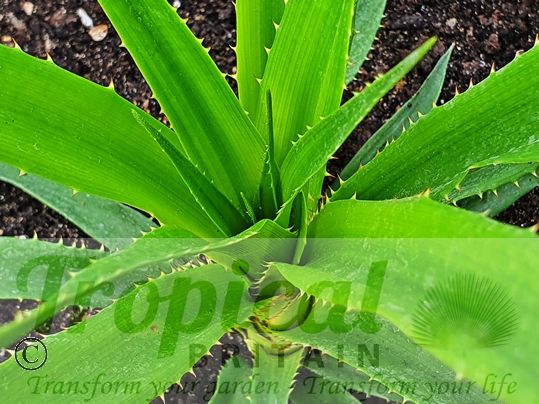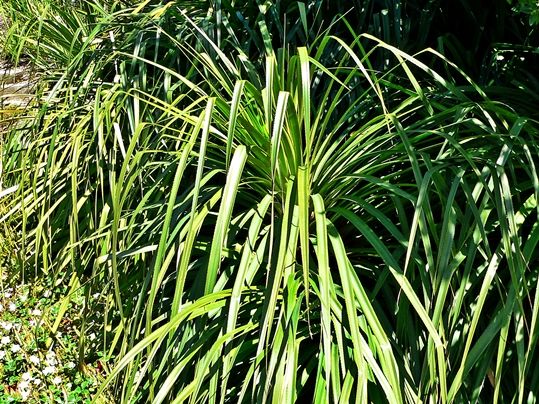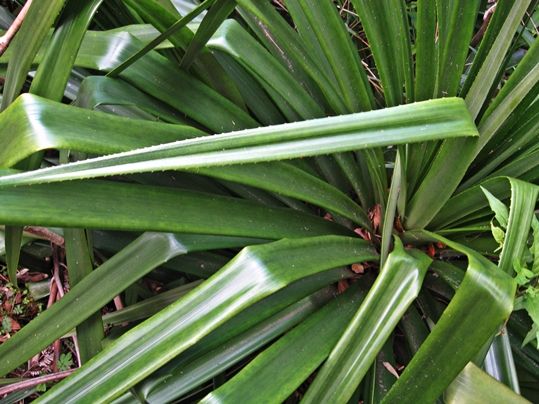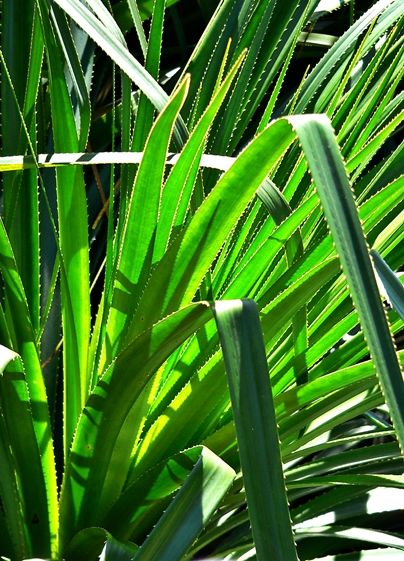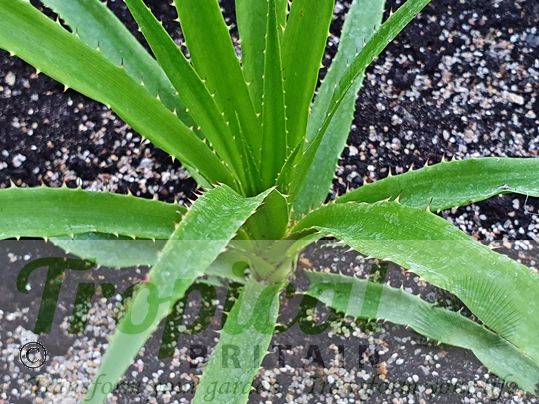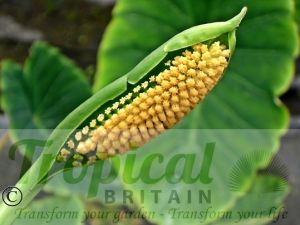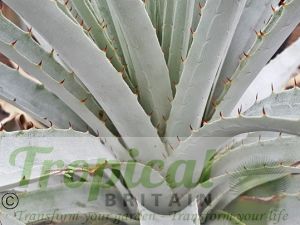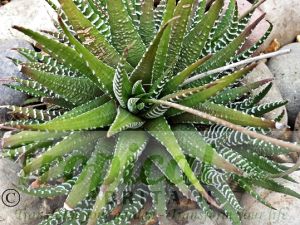Greigia sphacelata
Greigia sphacelata is a large-growing cold-tolerant Chilean bromeliad with robust rosettes of serrated green foliage. It forms a large clump and can grow up to 1.5 metres or more in height. Mature plants produce long white flowers with white anthers which are followed by elongated white fruits. These are edible and are cut from the base of the clump and eaten by squeezing them from the base and sucking the sweet white flesh directly into the mouth. For this reason they are called Chupones - Spanish for pacifier or dummy or sucker.
Greigia sphacelata is found in southcentral and southern Chile from the Maule region growing south through the Ñuble, Biobio, Araucania and Los Ríos regions to the Los Lagos region. Typically it is found in forested ravines and gullies, growing along streambanks and beneath the forest canopy in shade or semi-shade. Although it can sometimes be encountered in the open on the coast it is more usually found in the Valdivian temperate rain forest, the cool, moist ecosystem unique to south-central Chile which has some similarities with the temperate forests of New Zealand and south-eastern Australia.
Greigia sphacelata is cold tolerant and will take an occasional light frost when mature but it cannot be considered hardy in the UK in any real sense of the word. Caution should be applied if attempting to grow it outdoors. Experienced growers who have the benefit of a southerly or south-western location and a warm sheltered overhanging microclimate could experiment with it as long as they are sensible enough to have a double layer of fleece at the ready should it get too cold. It needs good drainage but it is more tolerant of wet roots than most Puyas with the exception perhaps of Puya dasylirioides. Experienced growers within the London heat island - and with the benefit of a warm, sheltered courtyard microclimate - will no doubt be tempted to give it a try but common sense needs to prevail, having the patience to only experiment with a robust specimen that has reached a decent size and has fully hardened foliage. Although growing Greigia sphacelata can be a challenge, most growers will have success with it in a large terracotta container that will give it the benefit of being moved around until an ideal aspect is found and which provides the safety of an emergency rescue should a sudden cold snap require it to be moved indoors or underglass. Even when overwintering underglass in a cool greenhouse, fleece is a sensible precaution for such a rare plant.
Greigia is a genus that is rarely encountered in UK horticulture and is virtually unknown to all but a small handful of dedicated enthusiasts. It is the only genus of Bromeliad that is not monocarpic and after flowering will continue to grow from the same rosette. It was first described by Eduard August von Regel, the German horticulturalist and botanist who had moved to St. Petersburg in 1855 and was the research director and later senior botanist at the Imperial Botanic Garden before becoming its director in 1875. Regel described both the genus and Greigia sphacelata in Index Seminum (LE, Petropolitanus) 1864 (Suppl.): 13 (1865) and also described Greigia sphacelata in Gartenflora, the botanical magazine he had founded in 1852. He named the genus in honour of Samuil Alekseevich Greig, (1827–1887) who was a General in the Imperial Army and whom Regel described as being 'very friendly to botany and horticulture'. Greig was the President of the Russian Gardening Society that Regel had founded and would later become the Russian Minister of Finance from 1878 to 1880. In 1873, Regel also named Tulipa greigii after him. Most poorly researched sources cite that Greigia is named after Samuil Greig, the Scottish-born Russian General who lived from 1735-1788. In fact, Samuil (Karlovich) Greig was Samuil (Alekseevich) Greig's grandfather and these basic errors are perpetuated from dubious wikipedia entries.
Rarely available. Limited quantities.
Additional Information
| Order | Poales |
|---|---|
| Family | Bromeliaceae |
| Sub-Family | Bromelioideae |
| Synonyms | Billbergia sphacelata, Bromelia clandestina, Bromelia discolor, Bromelia sphacelata |
| Geographical Origin | Chile |
| Cultivation | Full sun. Perfect drainage, with little water. Protect in winter and particularly in colder spells. In many areas it is best grown in a large container and moved indoors or under glass for the winter |
| Eventual Height | 1.2m-2m |
| Eventual Spread | 1m-1.5m |
| Hardiness | Hardy in some southern latitudes and urban microclimates. Protect with fleece elsewhere. Must have good drainage. Mulch deeply with bark, rock or grit |

Free DELIVERY
ON ALL ORDERS OVER £99THIS OFFER IS VALID ON ALL OUR STORE ITEMS.

